 |
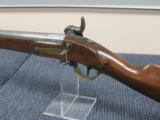 |
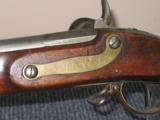 |
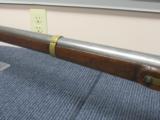 |
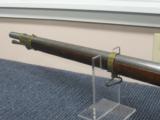 |
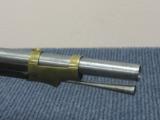 |
 |
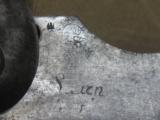 |
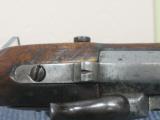 |
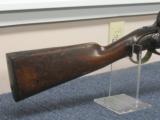 |
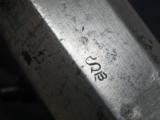 |
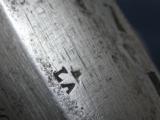 |
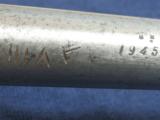 |
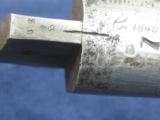 |
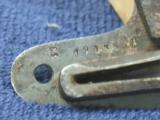 |
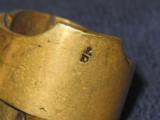 |
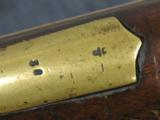 |
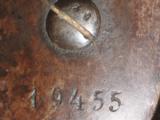 |

Civil War Imported Prussian Model 1809 Smoothbore Musket
Guns International #: 100698631 Seller's Inventory #:
Category: Civil War Rifles - Military Rifles - Antique
Seller's Information
When emailing or calling sellers direct, please mention that you saw their listing on GunsInternational.com
Seller: James Carr's Antique Guns and Collectibles
Member Since: 3/8/15
First Name: James
Last Name: Carr
State: Colorado
Zip: 81403
Country: United States
Phone: (703) 431-3159
Premium Seller
Number of Active Listings: 23
Total Number of Listings: 148
Seller: Private Seller
Return Policy: 3 day inspection and return policy on used guns.
Payment Types Accepted: Zelle, money orders or checks with cleared funds
Description:
The Prussian Model 1809 Smoothbore Musket (often referred to as “the Potsdam Musket”) was the most common Prussian arm imported during the American Civil War. Ordinance records list 142,823 being purchased and placed in service by the Federal government during 1861 and 1862. The weapon was originally manufactured as a flintlock for use by the Prussian Army, with the lockplate stamped with the particular armory of manufacture - “Potsdam”, “Saarn”, “Neisse”, “Suhl” or “ Dresden”. Beginning in 1839 most were converted to the percussion system, with the year of that upgrade stamped on the underside of the barrel. Starting in 1855, the Prussians began to rearm their front line infantry with breech loading Dreyse rifles. Accordingly, even though the 1809 Model remained a well made and fully serviceable weapon, the Prussians sold many of their surplus to the United States government. The gun proved a reliable long arm for many infantry units. It was referred to by some as a “pumpkin slinger”, given the large caliber (.71/.72) of the weapon. The damage this sized lead ball did at close range was substantial. Unique to this smoothbore was a fixed rear sight mounted on the tang/breach plug.
This particular example has decent exterior metal work in the original armory bright, with nice condition brass bands. The lock mechanics are good. The inside of the barrel is dark. The stock is solid, with good finish and wood to metal fit, but suffers from a number of wood splits or cracks as shown in the pictures provided. Apparently, some idle soldier decided to carve “1812” in the butt plate, which it is reasonable to presume was the gun’s original year of service issue. The year on the lock has worn off with time. The gun is all original and complete, save for missing the small ramrod retaining spoon in front of the nose band. Also, the original ramrod was replaced with an early Civil War period substitute consistent with the type then used with the U.S. Model 1842 smoothbore percussion musket. ( This ramrod substitution is often seen with these imported guns, and was logically a veteran Federal Soldier’s preferred alternative to the smaller headed Prussian ramrod). The lockplate has a “Saarn” armory stamp of original manufacture (faded at two letters). Underneath the barrel the 1845 date of percussion conversion is stamped. There are script “S”’s appearing on the lock and underneath the barrel, but I cannot discern the additional “a” or “oe” that would identify the percussion conversion as occurring at Saarn or Soemmerda. “19455” appears as a serial number on the bottom of the barrel, the right side of the tang/breach plug base, the inside of the percussion lock, and on the butt plate. The part matchup number “S8” still appears on a number of screw heads. The underside of the barrel, barrel bands and trigger plate are all maker stamped.
Packing and shipping to anywhere in the Continental USA west of the Mississippi by UPS ground will cost $50 in addition to the purchase price. Shipping charges elsewhere at actual cost. I do not accept payment by credit card or Pay Pal.
Please Note: I am just an old guy who collected guns, parts and civil war memorabilia for many years who is liquidating his collection. I do not make my living buying and selling guns. My comments on any particular gun being sold are based on my knowledge as a collector, my examination of the gun, my research, and my comparison with other similar guns. I do not purport to be the second coming of Norm Flayderman, and recognize that there is always something to learn in connection with antique guns (although others I encounter seem to think they know everything). The pictures I post are intended to give you what you need to make a fair assessment of the item being sold. Please study these closely. If you find there is some detail that is unclear, let me know and I will get you that detail if it exists. Finally and most importantly, be clear that the guns I am selling are being sold as collectibles and nothing more. I can tell you from years of competing with the NSSA as a black powder shooter, the shooting of antique guns is an activity that is totally different from modern shooting. The metallurgy of antique barrels and breach plugs can only sustain a certain amount of velocity, and may be impaired after 150 years or so of deterioration or abuse. Assuming a capable gunsmith has pronounced an antique gun safe to fire, only true black powder can be used, and then only in appropriate amounts. People who want to have the historical connection of firing an antique gun without the knowledge, experience or supervision to properly do so can wind up maiming or killing themselves. Please don’t do that.
SOLD
Curio/Relic: Yes
Antique: Yes